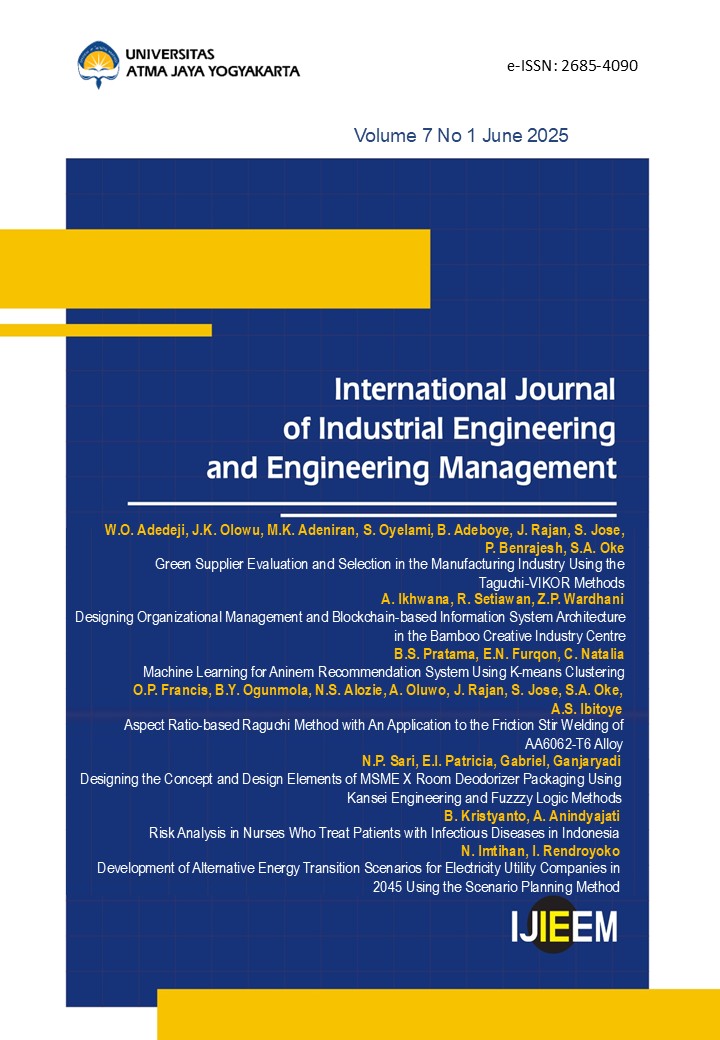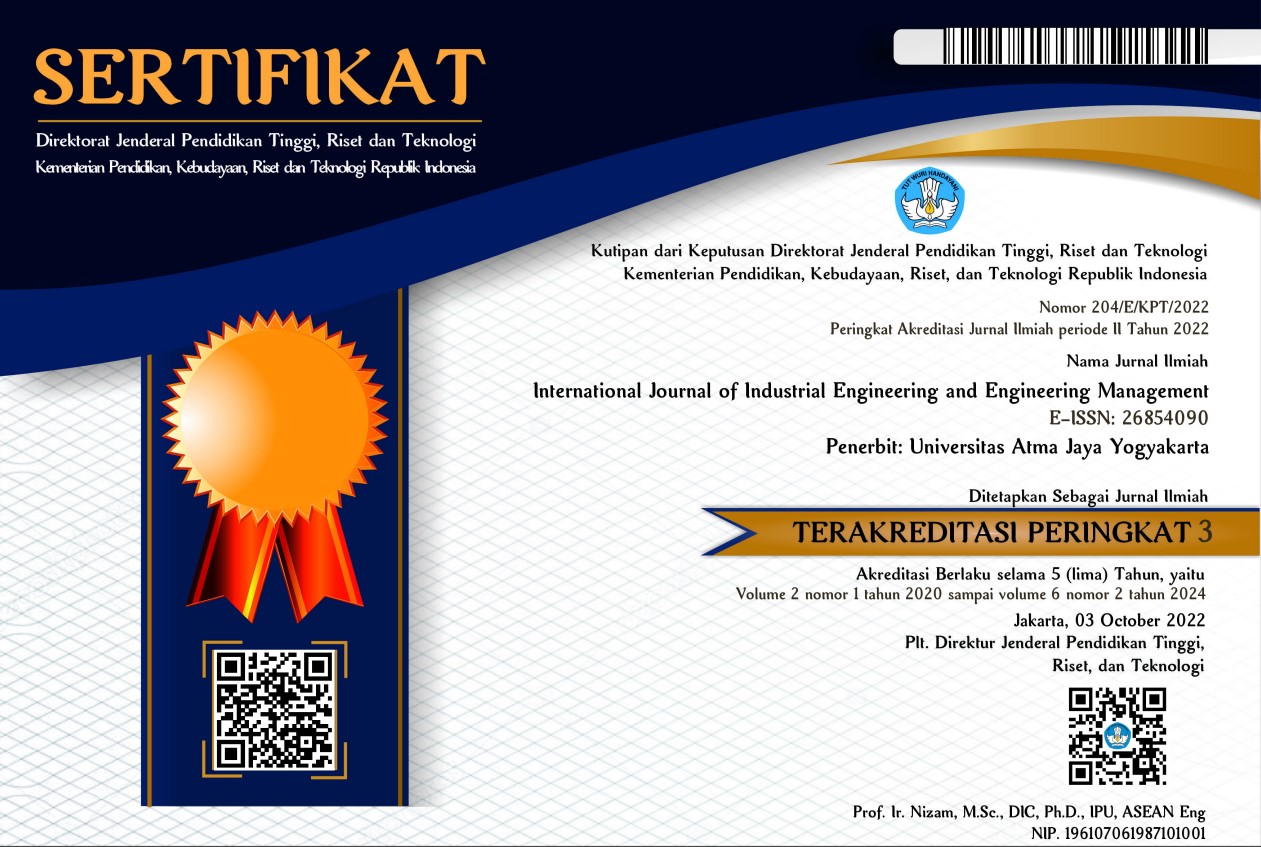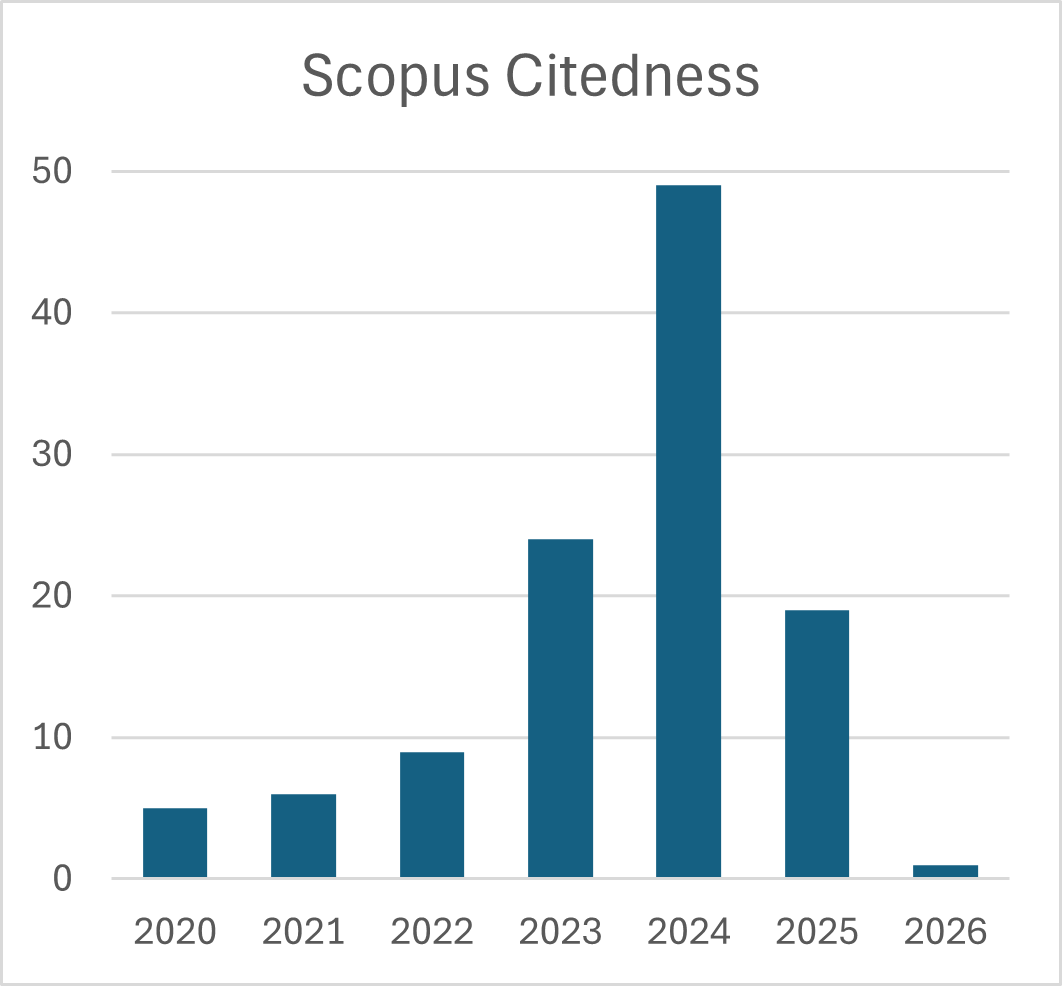Designing the Concept and Design Elements of MSME X Room Deodorizer Packaging Using Kansei Engineering and Fuzzy Logic Methods
DOI:
https://doi.org/10.24002/ijieem.v7i1.8636Keywords:
kansei engineering, packaging, PCA, QTT-1, purposive sampling, designAbstract
Air fresheners are comfort-supporting products widely used for room freshness. The packaging used by MSME X for air freshener products is only plain plastic without product identity, and it still has shortcomings in terms of functionality such as product protection, ease of use, and ease of obtaining product information. The purpose of this research is to develop concepts and design elements for MSME X air freshener packaging by considering consumer needs. This study analyzed the design of MSME X air freshener packaging using the Kansei Engineering method to translate consumer perceptions of packaging design. The data obtained was processed using Principal Components Analysis (PCA) to analyze the Kansei words collected by questionnaire to derive design concepts. The Quantification Theory Type 1 (QTT-1) method was also used to measure the relationship between design elements and design concepts. An evaluation was then conducted using the fuzzy logic method to determine whether the design elements used aligned with the selected concepts. The PCA method in this study resulted in 1 selected Principal Component (PC) which was implemented as a concept, namely "Common and Efficient". Determination of design elements using the QTT1 method resulted in selected elements, namely X1.5 (ivory), X2.9 (oval), X3.9 (hanger + window), X4.1 (medium), X5.6 (sliding tray), X7.4 (directly printed on the packaging) for the Efficient concept and X1.2 (rigid plastic), X2.4 (standing pouch), X3.8 (air hole + hanger), X4.2 (small), X5.7 (flip top), X6.4 (fresh + matching aroma) and X7.5 (no design) for the Common concept.
References
Adeoye, M. A. (2023). Review of Sampling Techniques for Education. ASEAN Journal for Science Education, 2(2), 87–94.
Amelia, D., & Oemar, E. A. (2017). Perancangan desain kemasan peppy ’ s snack surabaya. Jurnal Seni Rupa, 5(3), 584–590.
Arini, R. W., Wahyuni, R. S., Munikhah, I. A. T., Ramadhani, A. Y., & Pratama, A. Y. (2023). Perancangan Desain Kemasan Makanan Khas Daerah Keripik Tike Menggunakan Pendekatan Metode Kansei Engineering dan Model Kano. Jurnal INTECH Teknik Industri Universitas Serang Raya, 9(1), 42–52.
Asri, A. F., Chik, C. T., Rais, M. H. M., & Othman, N. (2020). SME Product Packaging: How to Attract Consumers? International Journal of Business Society, 4(7), 102–109.
Auliana, S., & Mansyuri, U. (2022). Penggunaan Metoda Fuzzy Tsukamoto Untuk Menentukan Produksi Barang Elektronik. Jurnal Simasi : Jurnal Ilmiah Sistem Informasi, 2(2), 123–129.
Bahani, K., Moujabbir, M., & Ramdani, M. (2021). An accurate fuzzy rule-based classification system for heart disease diagnosis. Scientific African, 14, e01019.
Coghlan, A. (2014). A Little Book of R For Bioinformatics. 2014, 51. http://cdn.bitbucket.org/psylab/r-books/downloads/Coghlan2014.pdf
Delfitriani, D., Uzwatania, F., Maulana, I., & Ariyanto, D. (2023). Pengembangan Konsep Desain Kemasan Produk Lealoe dengan Pendekatan Kansei Engineering. Jurnal Agroindustri Halal, 9(2), 229–237.
Firmansyah, A. (2023). Pemasaran Produk dan Merek Planning & Strategy. Penerbit Qiara Media. https://books.google.co.id/books?id=fiHHEAAAQBAJ&dq=Pemasaran+Produk+dan+Merek+Planning+%26+Strategy+firmansyah+2019&lr=&source=gbs_navlinks_s
Fitriah, M. (2018). Komunikasi Pemasaran melalui Desain Visual. Deepublish.
Gour, L., Jawaharlal, G., Krishi, N., Krishi Nagar, V., Pradesh, M., Sb, I. M., Krishi, N., Gk, I. K., Ss, I. S., Correspondence, I., Maurya, S. B., Koutu, G. K., Singh, S. K., Shukla, S. S., & Mishra, D. K. (2017). Characterization of rice (Oryza sativa L.) genotypes using principal component analysis including scree plot & rotated component matrix. ~ 975 ~ International Journal of Chemical Studies, 5(4), 975–983.
Habyba, A. N., Djatna, T., & Anggraeni, E. (2018a). A System Analysis and Design for SMEs Product Presentation on E-commerce Website based on Kansei Engineering (Case Study: SMEs Products of Ponorogo Regency). Advances in Intelligent Systems and Computing, 739, 20–29.
Habyba, A. N., Djatna, T., & Anggraeni, E. (2018b). An effective e-commerce design for SME product marketing based on Kansei engineering. IOP Conference Series: Materials Science and Engineering, 337(1), 0–6.
Hassine, J., & Amyot, D. (2016). A questionnaire-based survey methodology for systematically validating goal-oriented models. Requirements Engineering, 21(2), 285–308.
Hidayat, H. H., & Wijayanti, N. (2021). Product Development Model for Tempe Chocolate Chips Based on Costumer Preferences in Banjarnegara, Central Java, Indonesia. Industria: Jurnal Teknologi Dan Manajemen Agroindustri, 10(1), 25–32.
Isna, A., Sari, N. P., Maharani, D., & Fadhillah, F. (2024). Implementasi Kansei Engineering dalam Menentukan Konsep Pengembangan Kemasan Rujak Buah Potong. Jurnal INTECH Teknik Industri Universitas Serang Raya, 10(1), 9–18.
Jati, Z. N., Hastono, T., & Andrian, F. (2023). Prediksi Produksi Bawang Merah di Kota Yogyakarta menggunakan Metode Fuzzy Mamdani. Jurnal Publikasi Ilmu Komputer Dan Multimedia, 2(2), 129-137.
Kassambara, A. (2017). Practical Guide To Principal Component Methods in R: PCA, M(CA), FAMD, MFA, HCPC, factoextra Volume 2 dari Multivariate Analysis. STHDA
Lenaini, I. (2021). Teknik Pengambilan Sampel Purposive Dan Snowball Sampling. Jurnal Kajian, Penelitian & Pengembangan Pendidikan Sejarah, 6(1), 33–39. p-ISSN 2549-7332 %7C e-ISSN 2614-1167%0D
Mohd Adnan, M. R. H., Sarkheyli, A., Mohd Zain, A., & Haron, H. (2015). Fuzzy logic for modeling machining process: a review. Artificial Intelligence Review, 43(3), 345–379.
Mufid, N. A. (2023). Klasifikasi Besar Potensi Kemunculan Batu Ginjal Menggunakan Fuzzy Inference System (FIS) Metode Mamdani. Jurnal Pendidikan Matematika, 1(1), 15.
Naftasha, I. H., Sari, N. P., & Muryeti, M. (2022). Perencanaan dan Pengembangan Kemasan Produk UMKM Kebab Gilss Menggunakan Metode Kansei Engineering. Prosiding Seminar Nasional TETAMEKRAF, 1(2), 85-92.
Nagamachi, M., & Lokman, A. M. (2016). Innovations of Kansei engineering. CRC Press.
Nugraha, D. A., & Wiguna, A. S. (2020). Seleksi Fitur Warna Citra Digital Biji Kopi Menggunakan Metode Principal Component Analysis. RESEARCH : Computer, Information System & Technology Management, 3(1), 24.
Radhika, C., & Parvathi, R. (2016). Intuitionistic fuzzification functions. Global Journal of Pure and Applied Mathematics, 12(2), 1211–1227.
Sari, N. P., Imam, S., Camila Zain, N., Nur Asrianti, A., Khairul Akmal, N., Salmahanifah, S., & Yusr Aminah, Z. (2023). Perancangan Desain Kemasan Penyedap Rasa Berbasis Kansei Engineering. Seminar Nasional Inovasi Vokasi, 2(1), 1–11.
Sinulingga, N. A., & Sihotang, H. T. (2023). Perilaku Konsumen: Strategi dan Teori. IOCS Publisher.
Vilano, N., & Budi, S. (2020). Penerapan Kansei Engineering dalam Perbandingan Desain Aplikasi Mobile Marketplace di Indonesia. Jurnal Teknik Informatika Dan Sistem Informasi, 6(2), 354–364.
Yanagisawa, H., Nakano, S., & Murakami, T. (2016). A Proposal of Kansei Database Framework and Kansei Modelling Methodology for the Delight Design Platform. Journal of Integrated Design and Process Science, 20(2), 73–84.
Yung, X. Y. (2023). The Positive Role of Packaging in Consumer Behavior. Advances in Economics, Management, and Political Sciences, 63(1), 293–300.
Downloads
Published
How to Cite
Issue
Section
License
Copyright (c) 2025 Novi Purnama Sari, Emaregita Indah Patricia, Gabriel, Ganjaryadi

This work is licensed under a Creative Commons Attribution 4.0 International License.








